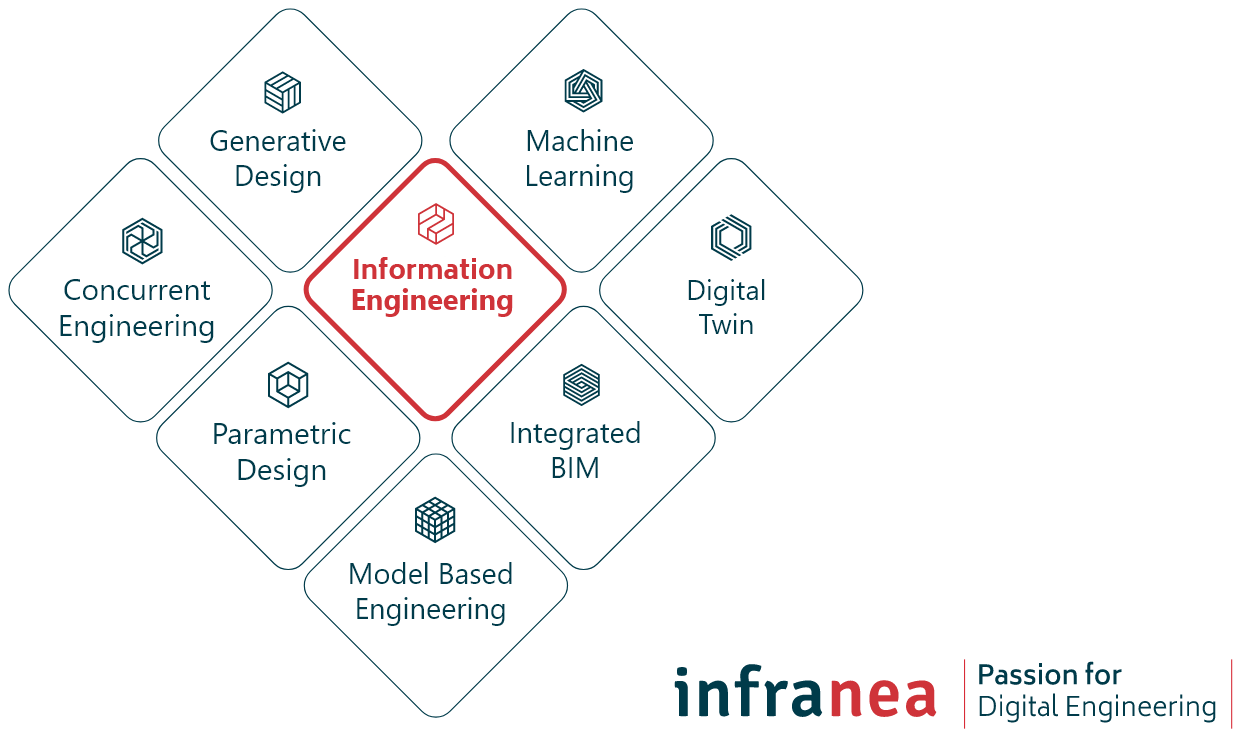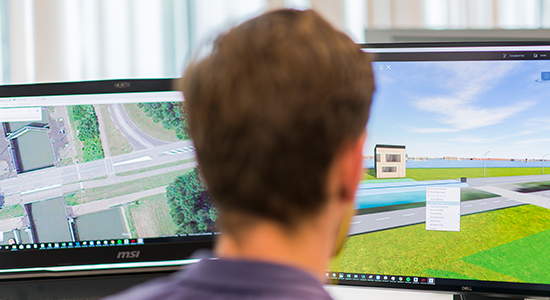Passion for information engineering.
For years, the engineers at Infranea have been using advanced software to digitise design details. This creates tremendous potential in terms of Infrastructure, Digital Engineering & Services and Processes & Methods. However, ‘information engineering’ is so much more than that…
What is information engineering according to Infranea?
Information engineering is the art of modelling, integrating and optimising design data thanks to digital competencies. It is the evolution from computer-aided to computer-controlled design of infrastructure. A information engineer is therefore a programmer as well as an engineer. The design logic is explicitly coded in workflows and algorithms. The advantage is that the design process is traceable and repeatable, significantly improving both quality and productivity.
What method does Infranea use to convert information engineering into practical reality?

What are the benefits of digital engineering for customers?
Our expert

Algorithms unleash the raw processing power of computers. This revolution from computer-aided to computer-controlled designs will have a fundamental impact on design practices.
Bruno De Saegher, Director Infranea



